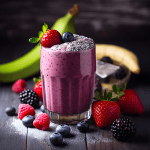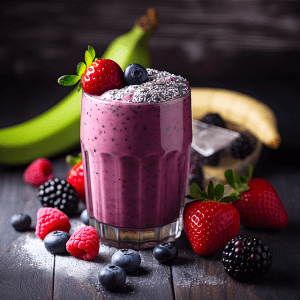Do you suffer from migraine and want to know about some effective home remedies for migraine? Michelle, an elementary school teacher, recalls having her first migraine when she was eight years old. She returned home from school with the neighborhood kids to an empty house because her mother was late from work. Michelle was suffering from a migraine while she waited. As soon as her mother arrived home, she rushed inside and puked.
By the age of 23, the headaches had become chronic and incapacitating. Michelle is now 29, but she hasn’t been headache-free in over seven months. Her headaches last several hours.
Along with following some home remedies for migraine, she is now seeking treatment from a neurologist who works with newer migraine treatment technologies such as Botox injection.
What is migraine
A migraine can be severe throbbing pain or a pulsing sensation on one side of the head, frequently accompanied by nausea, vomiting, and extreme sensitivity to sound and light, lasting for hours or days. Also, it can be severe enough to interfere with your daily activities. Research says it is the world’s sixth most disabling disease. Migraine pain is throbbing, perforating, debilitating, pounding, and pulsating.
Home remedies for migraine are non-drug methods of alleviating migraine symptoms. These treatments help prevent migraine attacks or, at the very least, reduce their severity and duration.
Home Remedies for Migraine Relief
However, a migraine attack necessitates medical treatment, so consult your doctor about a treatment plan that works for you.
#1. Avoid certain foods
Experts point out that certain foods and additives are more likely to trigger headaches in a higher percentage of migraines. Still, other factors like stress, lack of sleep, and hormonal changes can also increase the likelihood of migraines.
- Excessive coffee
- Alcoholic beverages such as red wine
- Aged cheeses
- Chocolate
- Citrus fruits
- Yeast
- Aspartame and other artificial sweeteners
- Monosodium glutamate
- Processed and cured meats
- Nuts and certain seeds
- Almonds
- Peanuts and many other nuts can trigger migraine
Here are a few more potential trigger foods, but there is no scientific evidence that they cause them; check out to see if any of these might be causing you pain.
- Avocados
- Dairy products like ice cream
- Buttermilk
- Chicken livers
- Organ meats
- Garlic
- Onion
- Pickled food
- Most beans, including Pinto lentil and snow peas, Smoked or dried fish
- Pizza
- Some fresh fruits like red plums, raspberries, papaya, and banana
- Dry fruits like raisins and dates
#2. Apply lavender oil
Research studies have found that lavender oils can treat migraines. A research study looked at the effect of inhaling essential lavender oil as a treatment for migraine. It concluded that inhaling essential lavender oil may be an effective and safe way to relieve migraine pain.
Similarly, in a study published in the journal of herbal medicine, participants who used lavender reported that their migraines were less frequent and severe.
How to use Lavender oil for migraines
Boil two to three cups of water, add 2 to 4 drops of lavender oil, then inhale the vapors. Massage a few drops of lavender oil into your temples as well. Likewise, you can use an oil diffuser or add the diluted oil to a warm bath to obtain its benefits.
#3. Migraine relief products (Cefaly)
Cefaly is the best OTC for migraine treatment migraine headache. It helps improve your quality of life and frees you from migraine pain. This simple device treats acute migraine attacks, reduces the number of migraine attacks by almost half, and prevents future episodes.
So how does Cefaly work
Cefaly gets to the root of the problems by limiting pain signals from the areas where migraine headaches start and even prevents future migraine attacks.
Cefaly migraine treatment includes
- The Cefaly device
- Instruction manual
- Power adaptor
- Charging cable
- Storage case
- Reusable electrode
Stephanie Vertree, a Headache Specialist at Austin, says, “Cefaly works as a preventive and an acute option and helps eliminate the need for multiple drug prescriptions.”
How does Cephaly prevent migraines?
Cefaly is an electrical nerve stimulation device. It sends tiny electrical impulses through an electrode positioned on the forehead to modify pain transmission and processing in the trigeminal nerve.
#4. Try acupuncture
This traditional Chinese medicine involves inserting skinny needles into the pressure points on your body. This ancient practice helps restore positive energy flow throughout the body and removes the negative energy causing you pain.
From a medical perspective, inserting needles into the different pressure points stimulates the nerves to release hormones such as endorphins that trigger a positive response in the immune and circulatory systems and help relieve migraines and tension headaches.
#5. Look for feverfew
Feverfew belongs to the daisy family. It’s been used for centuries to treat arthritis, headaches, and problems with labor and childbirth.
In 1980, a survey of 270 people with migraine in Great Britain found that more than 70% felt much better after taking an average of 2 to 3 fresh feverfew leaves daily.
Other research has found that taking dried leaf capsules may reduce the number of migraines in people who suffer from chronic migraines.
You can eat the leaves as a preventive measure. Feverfew leaves have a bitter flavor, so you can disguise it by hiding a few leaves in a sandwich or salad.
However, eating fresh leaves should be done with caution. Always consult your doctor before taking any herbal medicine.
#6. Ginger
Aromatic ginger root helps to relieve headaches and migraine. Ginger contains naturally occurring oil responsible for its flavor and health benefits. The chemical compounds present in the oil are gingerols and shagols. These chemical compounds have pain-relieving effects and anti-inflammatory properties.
Likewise, ginger extract may increase serotonin, a neurotransmitter acting as a hormone. Increased levels of this hormone in the brain may help stop migraine by reducing inflammation and restricting blood vessels. This action is similar to the action of prescription medication called triptans.
How to use ginger for migraines
- Ginger supplement
- Enjoy ginger lozenges
- Drink ginger ale
- Brewing ginger tea
- Add ginger to your dishes
A simple way is to massage a few drops of the diluted ginger oil in the temples, back of the neck, and forehead once or twice daily. The aroma of the oil reduces nausea that commonly occurs with migraine.
#7. Sign up for yoga
Yoga enhances physical fitness and helps with pain, anxiety, and depression. Also, it slows down the heart rate, lowers blood pressure, and helps the body recover after a stressful event.
A 2014 study found that the intensity and frequency of migraine were reduced in people who practice yoga along with their regular treatment regimen.
Yoga poses reduce migraine headaches.
- Childs Pose: This pose calms the nervous system and reduces pain
- Bridge pose: The bridge pose opens the heart, chest, and shoulders and minimizes any anxiety
- Downward facing dog increases blood circulation to the brain.
- The corpse pose restores the body to a deep state of rest.
#8. Adding magnesium to your diet
Magnesium plays a vital role in our bodily functions. Not to mention, low magnesium levels can cause headaches and migraines. A 2021 study found that magnesium oxide effectively prevents migraine attacks without adverse side effects.
Earlier research studies also indicate that magnesium supplements can effectively avoid mensuration-related migraines. You can take magnesium oxide in pill form to prevent migraines.
If you are not interested in taking supplements, please include magnesium-rich foods in your diet. Dark leafy greens like spinach and chad are some of the best foods that contain magnesium. For instance, 1 cup has about 38 to 40% of RDA of magnesium.
Other magnesium-rich foods include
- Pumpkin seeds
- Squash seeds
- Almonds
- Mackerel
- Tuna
- Pollock fish
- Figs
- Avocado
- Black beans
- Lentils
- Dark chocolate
- Banana
#9. Stay hydrated
A dehydration-related headache happens when your body doesn’t have sufficient fluids. Even mild dehydration will cause headaches and often get better with home remedies like drinking water, over-the-counter pain relievers, and rest.
When dehydrated, your brain and other tissues shrink. As your brain shrinks, it pulls away from the skull and nerves, causing pain. Drinking water and other fluids plump up the brain to its previous size, and the pain disappears.
How do I prevent dehydration and headache?
- Drink plenty of fluids
- Hydrate before you feel thirsty
- Replace the fluids you lose
- Take a break when you need to rest.
#10. Scalp massage
Migraine massages work by applying pressure as a means of pain relief. This practice comes from the traditional Chinese therapy method of acupressure.
Applying pressure to particular points on the body alters the pain messages the nerves send to the brain, making you feel less pain than before.
Mix two drops of frankincense oil, peppermint oil, and lavender oil into one tablespoon of almond oil, which acts as a base. If you don’t have the essential oils, use just the almond oil.
Rub a tiny bit of your mixture onto your index and middle fingertips
Massage your temples in a circular motion for 30 seconds.
How to give a head massage
- Sit down in a comfortable chair.
- Give light to medium pressure on your head with your fingertips or massage tools.
- Massage the entire scalp for around 5 minutes in small circular motions.
- After which, you can wash the oil out with shampoo
- Use gentle strokes and massage the neck as well.
#11. Cold compress
Using a cold compress to remedy headaches and migraines has been in practice for 150 years. Applying a cold compress for the eyes and back to your head causes several effects and dulls the pain sensation. Experts say that the cold can constrict the blood vessels and helps reduce the neurotransmission of pain to the brain.
A research study found that applying a frozen neck wrap at the onset of migraine significantly reduced the pain in the research participants. The researchers believe that the cooling pact cooled the blood flowing to the artery in the neck, reduced inflammation in the brain, and helped improve the pain felt by the migraines.
How to use an ice pack
Keep the ice over the pain or at the base of your skull for 20 minutes. Then take it off for an hour. Repeat this method on-off until the pain subsides.
#12. Vitamin B12
Vitamin B12 (riboflavin) participates in many metabolic processes, and specifically, it may play a role in pathways involved in migraine development.
Migraine episodes may link up with oxidative stress and brain inflammation. An analysis of nine studies shows that taking 400 mg per day of Vitamin B2 for three months significantly decreased migraine pain, episodes’ frequency, and duration.
Also, vitamin B12 is well tolerated and has no severe side effects.
Home remedies for migraine headache during pregnancy
The American pregnancy association’s recommendation for headaches during pregnancy
- Gently apply a warm compress around your eyes if you have a sinus headache.
- Massaging the shoulders and neck also helps
- Practice deep breathing
- Rest in a dark room
- Take a warm shower or bath
- Use a cold compress or ice pack
- Practice good posture, mainly in the third semester
- Eat more frequent, smaller meals to maintain your blood sugar
Other measures to reduce migraine attacks during pregnancy
- Practice good sleep hygiene
- Practice stress management techniques like relaxation techniques, biofeedback, and yoga.
- Take magnesium or coenzyme Q10 supplements after consulting your doctor.
- Walk at least half an hour per day
- Reduce your workload
How can I permanently cure a migraine headache?
While there is no cure for migraine medications, avoiding the triggers can help prevent or reduce their frequency. Likewise, lifestyle changes like easing stress and having a good night’s sleep can help to reduce migraine attacks.
Please try to follow the home remedies for migraine relief steps discussed in this article. Making these lifestyle changes and having a positive attitude can go a long way in living a migraine-free life.














